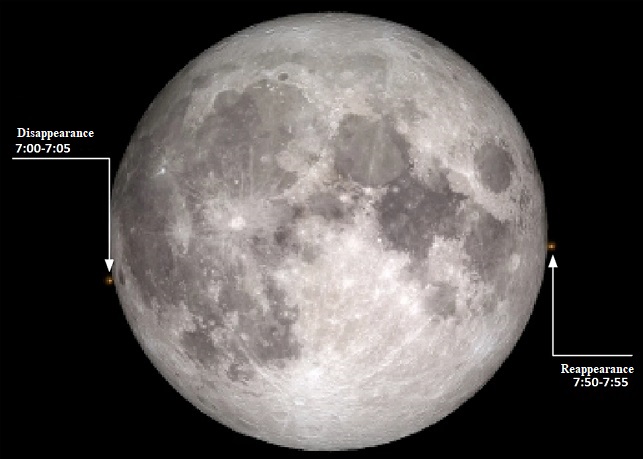In November of this year, a rare situation was realized when four bodies of the Solar System — the Sun, the Earth, the Moon, Uranus — turned out to be practically on the same straight line. Now this configuration is repeated, only the planet Mars will take the place of Uranus. On December 8, it will undergo an opposition (this will be the last planetary opposition of the current year), and in the morning of the same day it will be covered by the full Moon.
Mars will be the closest to a straight line passing through the centers of the Sun and the Earth — this is how the primary definition of the term “opposition” sounds — at 5:35 a.m. Universal time. At this moment, from the point of view of observers on the territory of Ukraine, it will be behind the lunar disk, so formall, we will not see the Martian opposition this year. But this fact does not really upset astronomers, because the visibility conditions of the Red Planet in the next few days will be just as beautiful.

In Kyiv, the occultation of Mars by the lunar disk will begin at about 7:02 a.m. (the exact moments differ for different districts of the city). At this time, our natural moon will be 8° above the north-western horizon. The reappearance will take place at 7:50 a.m, when the Moon drops to a height of less than 2°, and the Sun will already rise on the opposite side of the sky. The conditions for observations will be much better in the western regions of Ukraine: for example, in Lviv, the phenomenon will start at 7:03 a.m. with an altitude above the horizon of more than 11°, and finish at 7:54 a.m. at an altitude of about 4°. In Kharkiv and Odesa, occultation will begin at 7:01 a.m. and 7:05 a.m., respectively, at 5° above the horizon, and will end after the Moon sets.

Due to the high brightness of Mars, its occultation will be clearly visible even in a daylight sky. The angular size of its disk will be 17 seconds — therefore, approximately 35 seconds will pass from the first touch of the planet’s disk to the edge of the Moon until its final disappearance. Its opening will last the same amount. The phenomenon will occure during the full Moon phase, so both the disappearance and the reappearance will be carried out by the illuminated lunar edge. Under the condition of a cloudless sky, they can be seen even with the naked eye, but it is better to use at least a small telescope or binoculars with magnification of more than 15 times.
Follow us on Twitter to get the most interesting space news in time
https://twitter.com/ust_magazine

